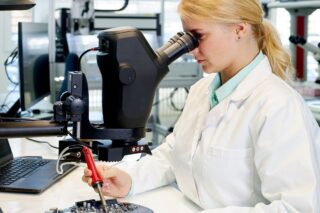Agrivoltaics is the new term in the lexicon of renewable energies. It involves placing solar panels in agricultural fields to generate electricity. However, this has been subject to numerous criticisms. Nonetheless, a French company, Sun’Agri, sees agrivoltaics as a means to increase yields and assist farmers in adapting to climate change. We met with Nathanaël Kasriel, Deputy Director in charge of agrivoltaic services at Sun’Agri to learn more about their technology.
As the International Agricultural Fair is currently taking place in Paris, we are highlighting technological solutions that combine adaptation to climate change, reduction of carbon emissions, and increase in yields.
We are already familiar with solar, wind, geothermal, and hydroelectric power. Now we have agrivoltaics. The concept is increasingly gaining traction in France, Italy, and Israel. The idea is to combine agriculture and solar energy production on the same agricultural plot. However, the objective is also not to hinder crops and even increase yields.
This is how Sun’Agri, a subsidiary of the Sun’R Group, a pioneer in photovoltaics in Europe, understands it. Founded in 2019 and recently acquired by Eiffage Concessions, the company advocates for responsible agrivoltaics that would not jeopardize arable land in favor of electricity production. As the agriculture fair opened in France, in Paris, this weekend and lasts throughout the week, DirectIndustry met with Nathanaël Kasriel, Deputy Director in charge of agrivoltaic services at Sun’Agri.
Agrivoltaics: From Shade to Light
Sun’Agri is the culmination of a research project that began in 2009, and it was around 2011 that the term first appeared in a research article.
“The idea was not only to combine agriculture and photovoltaics, but how. You have a solar panel. This solar panel produces energy but it can also provide shade. How do we use this solar panel not only to produce electricity but to adapt crops? In a climate-stressed environment, how do we use the shade from the panels to protect plants from climate change?”
The company, which is not an energy developer, develops agricultural adaptation infrastructures to climate change by developing algorithms for adapting light and shading for crops for farmers who need to adapt to climate change.

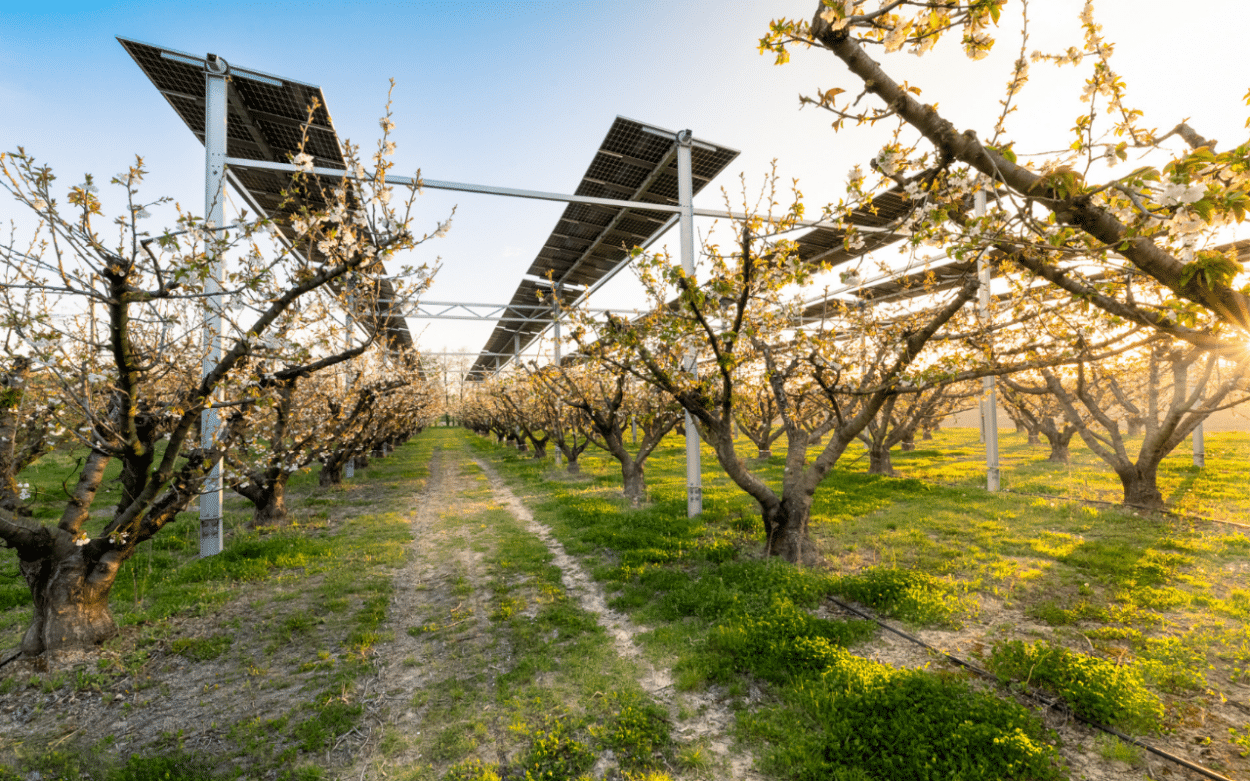
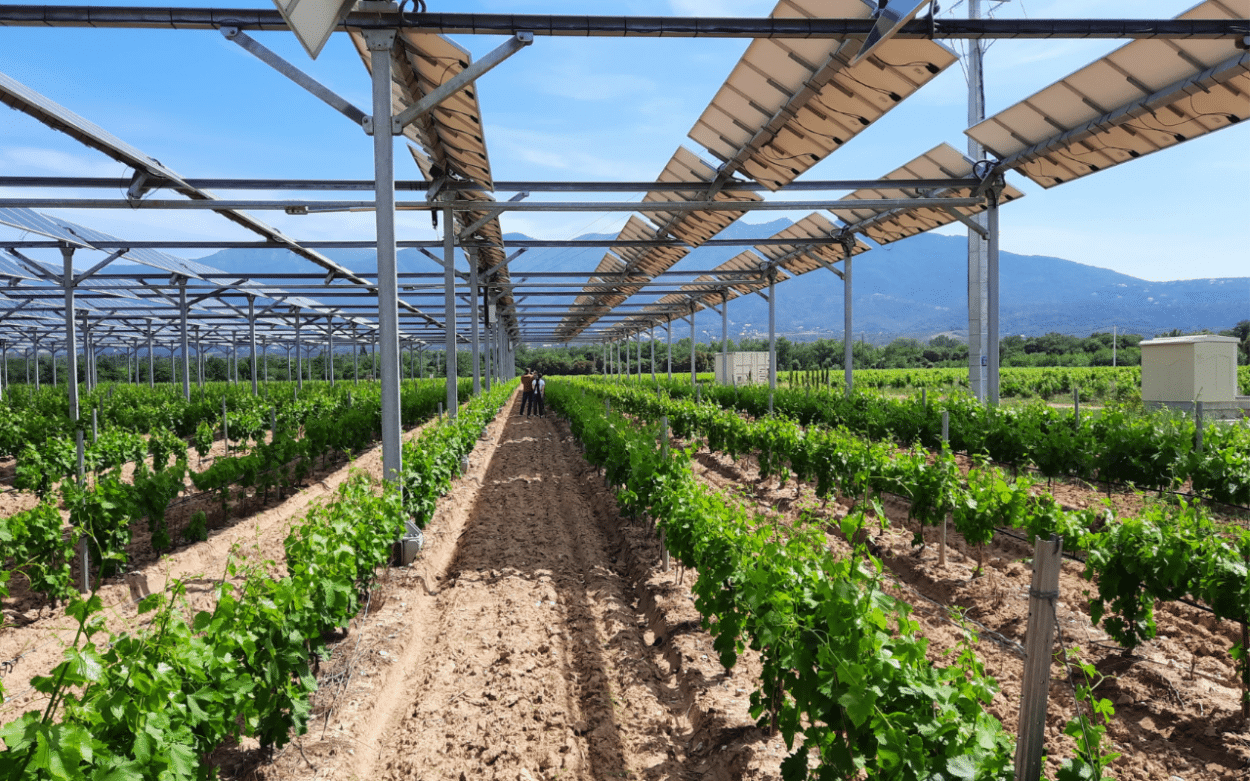
Sun’Agri first installs the solar panels with the farmer, whether it be in market gardening, vineyards, or arboriculture, as well as IoT sensors (soil water status sensors, temperature sensors, humidity, weather…) and weather data from Météo France.
Farmers can track the data through an application, but the control of the panels, namely when shade is needed or not, is done by Sun’Agri. The farmer does not need to do anything.
“We decrease electricity production to provide shade when, for example, your plant is too hot and at that moment it can no longer photosynthesize. In these cases, the excess solar energy you provide is harmful. And on the contrary, we let light through when the plant needs to photosynthesize.”
The goal is indeed to protect plants from extreme heat by providing shade with solar panels. But there shouldn’t be too much shade either, as it would prevent these plants from photosynthesizing and therefore developing.
More Yields
In theory, agrivoltaics can be applied to any crop. But in practice, the crops that are best suited for it are those currently under climatic stress, especially around the Mediterranean. Crops such as vines, fruits (peaches, apricots, pears), and greenhouse vegetables are particularly relevant. These crops will need to adapt in a context of climate change, where water is becoming scarcer, and permissions for drilling and irrigation are decreasing.
Sun’Agri trains its algorithms on about fifteen pilot tests in France. According to Nathanaël, the farmers involved are generally satisfied.
“We observe an improvement in yields and quality. We have a white paper available for download, to give you the results we obtained this year at a site in the Eastern Pyrenees, near Perpignan, in a context of drought and intense climatic stress compared to a control site with almost identical conditions but without solar panels. Specifically for vines, we saw an increase of over 45% in yield for white Grenache, over 40% for non-irrigated black Grenache, while the others were irrigated, over 25% for Marcellaud, and over 10% for Chardonnay.”
Regarding fruits, improvements are in the range of 10 to 15% for cherries. For vegetables, it’s over 25% for cucumbers, over 10% for eggplants, and the same for tomatoes.
And the beneficial effects are also evident, the company tells us, in the case of spring frost.
“Under the structure at night, the temperature under the panels increases by about two degrees Celsius. You have warm air retention that helps protect against frost. In 2019, there was devastating frost on apples, which destroyed 90% of the apples in the control area, while almost nothing happened under the panels.”
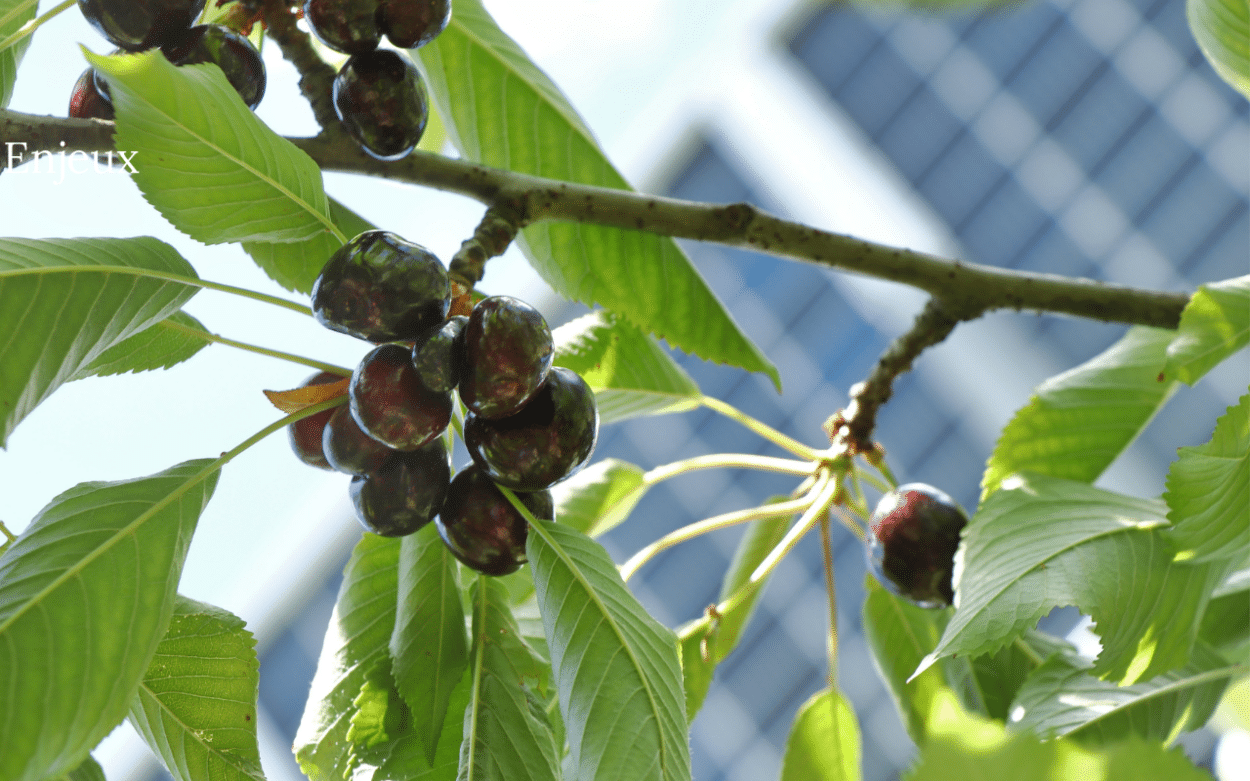


Criticisms
But then, if agrivoltaics has so many beneficial effects for farmers and offers a green solution for adapting to climate change, why all these criticisms?
For some, agrivoltaics is seen as a threat to the farming profession. The risk is that farmers will abandon their main activity in favor of green electricity production, which is more lucrative. However, the farming profession is essential to our economy.
Nathanaël is aware of this:
“For some of my colleagues, agrivoltaics is simply seen as making agricultural land available for energy production. It’s about putting photovoltaic panels in exchange for rent.”
Rents can range from 1000 euros to 15000 euros per hectare. In comparison, agricultural leases generate around 100 euros per hectare.
“This means that you earn ten to a hundred times more rental value if you are a landowner by making your plots available for energy production. And so, this rightly raises criticisms. Sun’Agri, however, sees agrivoltaics not as a means of making agricultural land available for energy production, but as how photovoltaic infrastructures directly serve agriculture. And this direct service is climate change adaptation.”
Business Model
The investment cost, depending on the type of structure, ranges from 500,000 to 1 million euros per hectare. The interest of agrivoltaics, according to Nathanaël, is also that the adaptation infrastructure is financed by the sale of electricity.
“This is the whole point of the solution: you have zero-cost infrastructure that adapts to climate change. It’s a renewable energy infrastructure, and the ROI time is between 15 and 20 years because facing an infrastructure investment with very little risk, you have a return time of 5 to 6% on your project over thirty years. So, you recoup your investment in principle between fifteen and twenty years.”
In terms of panels, the energy produced is around 0.8 megawatts per hectare. The lifespan of the structure is approximately thirty years.
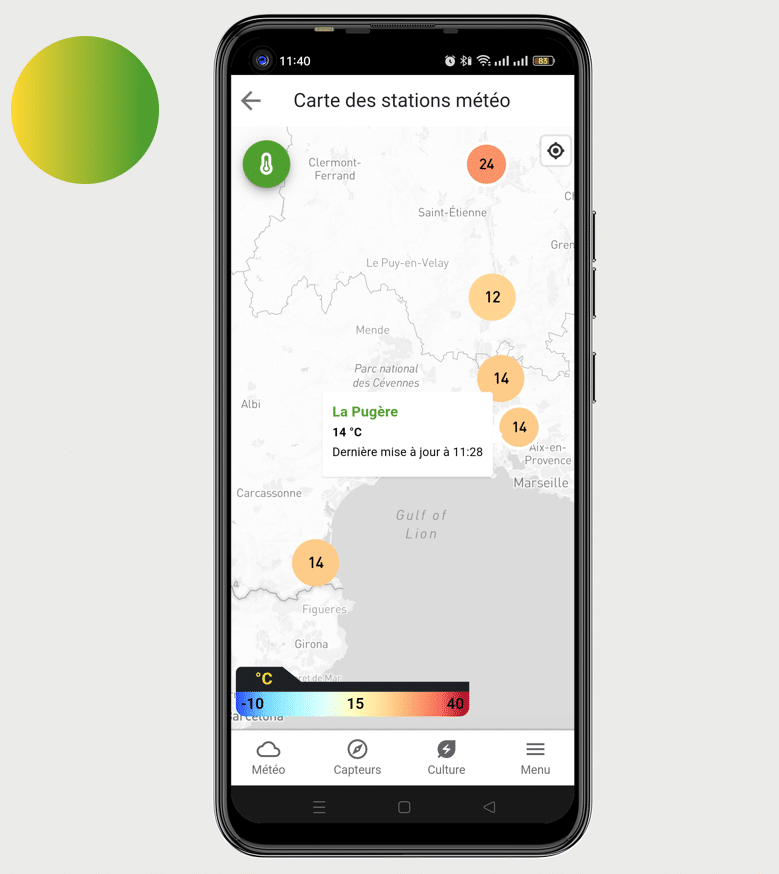

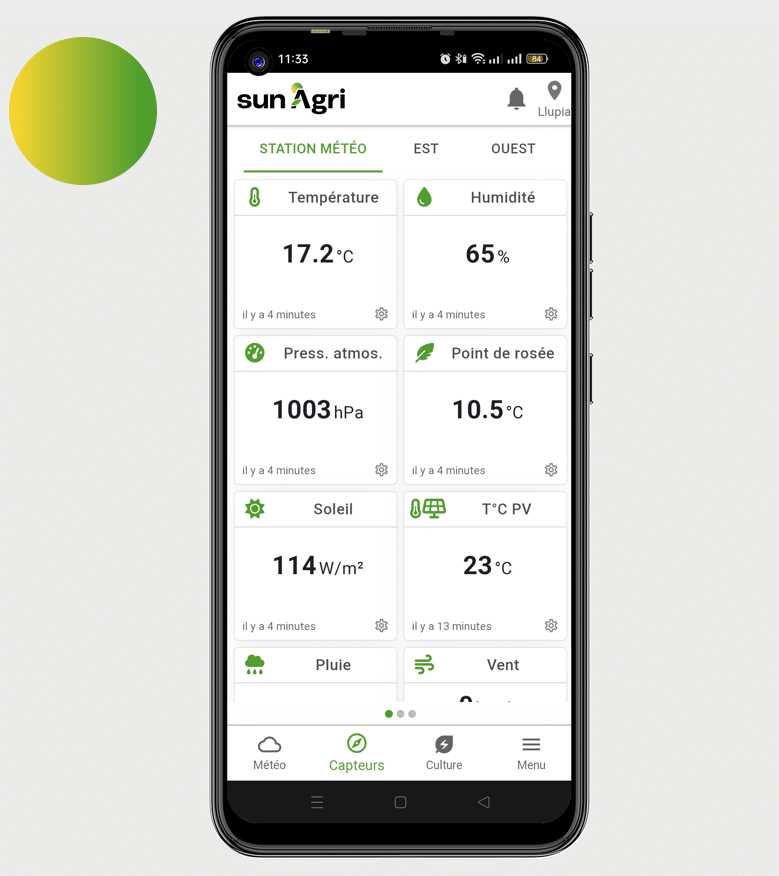
International, Industrialization, Livestock
Sun’Agri currently has 200 employees and teams in France, Italy, and Israel. The main objectives are industrialization and further refinement of their control algorithms.
“The more sites we have, the more data we accumulate, and the more data we have, the more precise our algorithms become.”
They also aim to expand into other segments such as livestock, for example.
Adapting to Climate Change
Just like Sun’Agri, many other companies are developing products to help farmers adapt to climate change. French company Elicit Plant has released BEST-a Maize, a solution to address the pressing issue of water scarcity. According to the company DirectIndustry interviewed, the field results allow for a gain of 10 to 12% in corn yield in case of drought. The company has also launched the same product for soybean crops.











